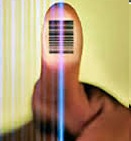On May 6, 2004, the FBI arrested Oregon lawyer Brandon Mayfield. A partial print found on a bag of detonators had conclusively linked him to the March 2004 Spanish terrorist bombings. Four separate fingerprint examiners positively identified the latent print as belonging to him.
All four examiners were wrong. In fact, three weeks before Mayfield was arrested Spanish officials had informed the FBI that they had matched the partial print to an Algerian man named Daoud Ouhnane. Still, the FBI believed their own experts and arrested Mayfield. Eventually, Mayfied sued for wrongful arrest and imprisonment, as well as civil rights violations, and won $2 million.
Clearly this was a freak occurrence that couldn’t possibly ever have happened again. Except it did. In connection with a 1994 murder, examiners had positively matched Beniah Dandridge’s fingerprints to ones found at the crime scene. In 2015 new examinations disputed the identification, and Dandridge was cleared of charges. He was released in 2015 after serving 20 years of a life sentence.
Although there is no empirical scientific proof of a fingerprint’s uniqueness to a given individual, no one really doubts this is true. The real problem is latent prints, i.e. those prints found on a crime scene, which are often smudged and partial.
The very first person who doubted the usefulness of latent fingerprints was the very first person in modern times who proposed using fingerprints to solve crimes, i.e. Henry Faulds, a Scottish doctor. He wrote:
“The least smudginess in the printing of them might easily veil important divergences … with appalling results…. (police were) “apt to misunderstand or overstrain, in their natural eagerness to secure convictions.”
Despite a century plus of use by the courts, Henry Faulds objections remain surprisingly sound. No empirical or established standards exist for matching latent prints.
Nor are challenges to the legality and scientific basis of fingerprints limited to desperate defense attorneys. In 2007, a judge in Maryland judge ruled fingerprint evidence in a death penalty case was inadmissible, because it was “a subjective, untested, unverifiable identification procedure that purports to be infallible.” In 2002, Judge Louis Pollack ruled that fingerprint identification was not a legitimate form of scientific evidence. He later reversed himself. Since 1999, nearly 40 judges have considered whether fingerprint evidence meets federal or state standards for the admissibility. All have ruled in favor of the status quo, but many think that the very existence of so many challenges is worrisome. Even the National Academy of Sciences (NAS) has raised doubts and has called for vigorous scientific investigations.
In fact the NAS has conducted one study about the accuracy of latent fingerprint matching. Excerpts from their conclusions:
“False positive errors (erroneous individualizations) were made at the rate of 0.1% and never by two examiners on the same comparison.
“The majority of examiners (85%) committed at least one false negative error, with individual examiner error rates varying substantially,
“This lack of consensus for comparison decisions has a potential impact on verification: Two examiners will sometimes reach different conclusions on a comparison.”
A 0.1% false positive error (claiming a match that does not exist) may not sound like much. However, consider thousands of fingerprints are processed every year. If the above false positive rate is correct, it is safe to assume that at least some individuals will be erroneously matched.
It is extremely unlikely that the courts will discard over one hundred years of legal precedent and throw out fingerprinting altogether. However, we can expect more challenges in the future and a growing skepticism among both professionals and the public.
What should Law Enforcement Officers do?
- Strictly enforce current standards regarding evidence collection and processing. This is just good police work, and will become more critical as legal and scientific challenges persist.
- Currently only about half of fingerprint examiners have passed a proficiency exam by the International Association of Identification, the profession’s certifying organization. While there is no evidence that certified examiners are less prone to mistakes, it would be appropriate if all working examiners have passed the test, if nothing else, just to deflect attacks by attorneys.
- Educate the public in general and jurors specifically. There has been growing apprehension about the “CIS effect,” i.e. the public having unrealistic expectations about forensic evidence. This had led to prosecutors explaining to jurors how the reality of forensics differs from fictionalize versions. With mounting criticism about fingerprints, prosecutors will again find themselves in the role of educators.
- Change the standards of expert testimony. Currently, examiners are trained to testify only when they “’absolutely certain.” This is a highly unscientific standard, and examiners should be taught to state their opinions in the terms of probability. Of course, research has to be done to establish such probabilities; none exist now. There is no scientific research about the chances of two individuals exhibiting the same or similar ridge characteristics.
Although controversy has been so far limited to latent prints, it is reasonable to extrapolate from current trends challenges to verifications and enrollments as well. Police officers are already powerfully motivated to take good quality prints from enrollees. Access to the FBI’s Automated Fingerprint Identification System (AFIS) require print images that meet high quality (all AMREL handheld biometric devices meet FAP-45, an extremely stringent standard). Good quality sensors, especially Light Emitting Sensors (LES), require fewer retakes, and save time. In addition to these established reasons, high-quality fingerprint images also provide a credible defense against legal attacks.
In the long run, it is up to the court of science, not the court of law, to establish the true credibility of fingerprint evidence. In the meantime, law officers’ only option is to pursue their duties with excellence and the best equipment they can acquire.



